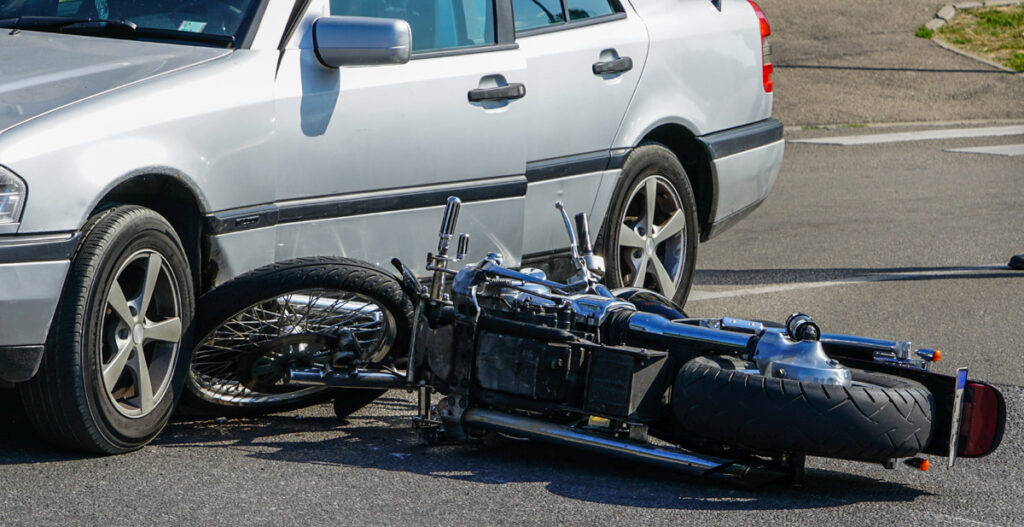
Knowing general motorcycle safety statistics helps you understand bikers because you understand the challenges they face. In addition, you must know how to market your company. Also, knowing the history of the biker will, in part, determine your company’s online success.
If you sell products related to motorcycle safety, you must know the riders’ challenges and concerns about safety to address them and close sales. Helmets, jackets, headlights, brake lights, tires, brakes, etc., are related to motorcycle safety. By understanding how accidents happen, your company can create more convincing web content on your motorcycle site.
Hurt Report Motorcycle Safety Study
This brings us to the Hurt Report. Note that the official name of this safety study is “Motorcycle Accident Cause Factors and Identification of Countermeasures.” However, this report is commonly known by the primary writer’s last name, which is Hurt (Professor Harry Hurt).
Next, the Department of Transportation’s National Highway Traffic Safety Administration contracted with the University of Southern California Traffic Safety Center for this study.
Notably, all the professors who performed the research were riders. Subsequently, this helps improve the validity of this motorcycle safety study and eliminates the “Oh, they don’t ride, so they don’t know what they are talking about” argument.
Although this study was published in 1981, it is still the most comprehensive motorcycle safety study. Although other studies have been conducted, the Hurt Report is still the most thorough.
Yes, a forty-year-old study needs to be updated. Until this happens, the Hurt Report will still be the benchmark of safety studies. Moreover, you will find the core findings enlightening and helpful in marketing to your focus audience.
Of course, the Hurt Report does not reference the risks of drivers using cell phones. That said, you can factor cells in as one of the drivers’ “causes” of accidents.
It does not include the benefits of motorcycle ABS or stability innovations. However, recent reports contain many studies and information on these newer safety features. In addition, many innovations in automobiles help avoid accidents that were not considered.Q
Findings of this Safety Report
Next, the below details are summaries from the Hurt Report (Hurt, H.H., Oulett, J.V., Thom, D.R. (1981). Motorcycle Accident Cause Factors and Identification of Countermeasures: Volume 1: Technical Report. Traffic Safety Center of the University of California).
Throughout the accident and exposure data, some observations relate to accident and injury causation and characteristics of the accidents studied. Below is a summary of the Hurt Report’s findings.

Non-Human or Vehicle Factors
- In 98% of motorcycle accidents, the weather was not a factor.
- The majority of accidents happened during short trips.
- The average pre-crash speed average was 29.8 mph. The speed at which the bike crashed was 21.5 mph.
- A quarter of accidents were with only a bike on the roadway or colliding with an object.
- The bike’s mechanical failure caused 3% of the accidents, most of which were due to tire flattening.
- Road defects, like potholes, caused 2% of accidents.
- Animals were involved about 1% of the time.
- Vehicle problems were rarely a contributing factor. Defects caused accidents and were most often related to poor or incorrect maintenance.
- The better the bike can be seen, the lower the chance of accidents – for instance, headlights, taillights, and bright or reflective clothing help.
- Having the front of the bike well-lit was the best location on the motorcycle to avoid accidents.
- An impaired line of site was not a contributing factor in three-fourths of accidents.
- The average time for countermeasures was about two seconds.
- Having passengers did not change the probability of accidents.
- The effect of the color of the bikes could not be determined.
- 98% of the multiple-vehicle collisions and 96% of the single-vehicle accidents resulted in some injury to the rider. And 45% resulted in more than a minor injury.
- Half of the injuries were to the ankle, foot, lower leg, knee, and thigh.
- Crashbars did not lessen the injuries.
- Jackets, boots, gloves, and other protective clothing helped reduce road rash and cuts. But they rarely lowered the severity of injuries.
- Jackets, boots, gloves, and other protective clothing help reduce road rash and cuts, but they rarely lower the severity of injuries.
Multi-Vehicle Accidents Summary
- About three-fourths of the accidents involved another vehicle. More often than not, in multi-vehicle accidents, the other vehicle involved was an automobile.
- In multiple vehicle accidents, the other vehicle’s driver was at fault two-thirds of the time. And this happened because they violated the motorcycle’s right-of-way.
- Automobile drivers most often cause accidents because they do not see the bike. This is whether they did not see the bike and rider until the collision or until it was too late to avoid the motorcycle.
- The most common scenario was when the bike went straight and an automobile turned left in front of them.
- An automobile intentionally hitting a motorcycle rider was rare.
- Intersections were the most likely place for accidents.
- Another cause was the other vehicle violating the bike’s right-of-way and often violating traffic controls.
- Glare or obstructed view for the rider was involved in half the multi-vehicle accidents.
- Drivers of automobiles unfamiliar with bikes had a higher probability of getting in an accident.
Motorcycle-Only Accidents
- Accidents were more prevalent among riders aged 16 to 24, whereas those aged 30 to 50 were notably underrepresented in the data.
- Most often, the rider in the accident was male.
- Blue-collar workers, students, and the unemployed were involved in a higher rate of accidents. This was compared to white-collar riders.
- Riders with previous traffic citations were more likely to be in accidents.
- Over 90% of riders in accidents were self-taught.
- Rider training courses lowered the rate of accidents.
- Over half the riders had less than five months of experience.
- Riders with dirt bike riding experience were less likely to be involved in accidents.
- When only a motorcycle was involved in an accident, two-thirds of the time, it was due to the rider’s error. Often, it was due to a low-side crash. And these types of crashes happened due to over-braking or running off the road in a curve.
- Riders most likely involved in accidents were 20-29 years old or over 65.
- Alcohol was involved in about half of the accidents.
- Collision avoidance measures were a factor. For instance, over-braking and under-braking were causal factors. Poor counters steering was also a factor.
- Riders who did not have a motorcycle license or with a revoked license were over-represented.
- Chopped motorcycles (choppers, bobbers, etc.) and crotch rockets were in the highest percentage of accidents.
- The rate of speed, use of alcohol, and the size of the bike increased the severity of injuries.
- Chest and head injuries were the deadliest.
- Less than 10% of riders who were in accidents had insurance.
- Lack of focus by the rider or driver was a common factor.
Motorcycle Safety Equipment
- About 25% of riders said they did not wear helmets for comfort or convenience.
- Over 50% of riders said they did not because they didn’t think they’d be in an accident.
- About 50% of riders wore helmets when in traffic. However, only 40% of those in accidents were wearing a helmet.
- Voluntary helmets were used least often for the untrained, uneducated, and younger riders on hot days and short rides.
- Wearing a helmet was the most effective injury countermeasure. No items related to wearing a helmet caused an accident.
- Both riders and passengers wearing helmets had fewer head and neck injuries, and the injuries sustained were less severe.
- Full-face motorcycle helmets decreased facial injuries.
- Wearing a helmet did not cause more neck injuries. Those riders wearing helmets had fewer injuries.
- Bikes with windshields and fairings were not involved in as high a percentage of accidents. The reason was that the increase in size made the motorcycle more visible. Plus, riders on these bikes tended to be more experienced.
- Larger displacement bikes were less likely to be involved in accidents, but the injuries were more severe.
- Over 70% of accidents occurred when riders were not wearing eye protection.
Next, the above should also give you a better understanding of the daily safety challenges riders face. The fundamental findings will help guide your search engine & web services team. Lastly, you can read about marketing stats and learn more about marketing on our blog.


